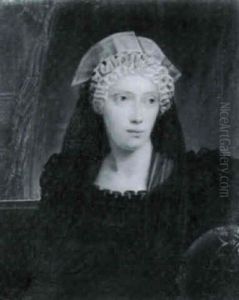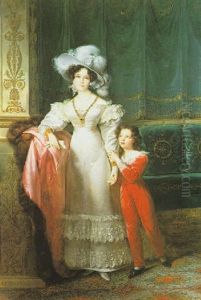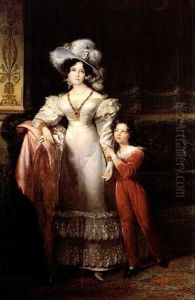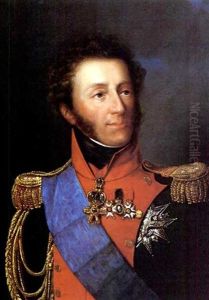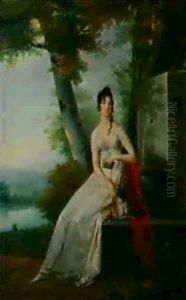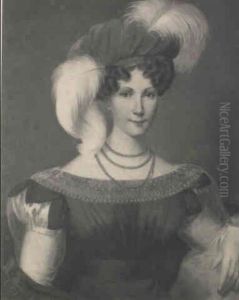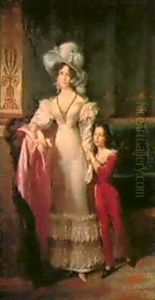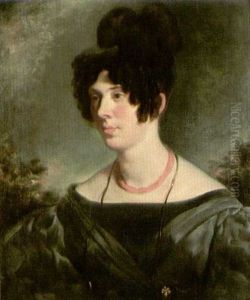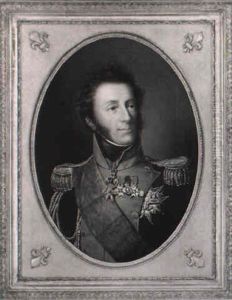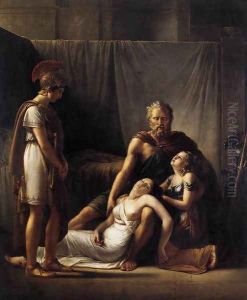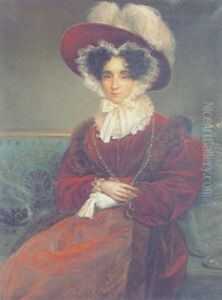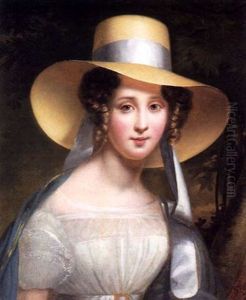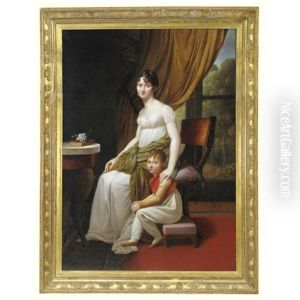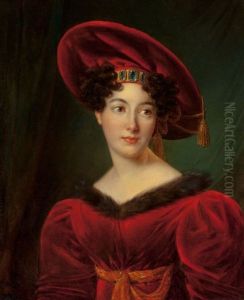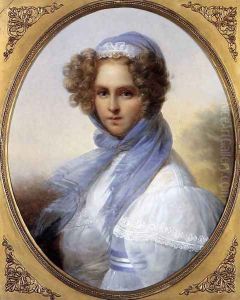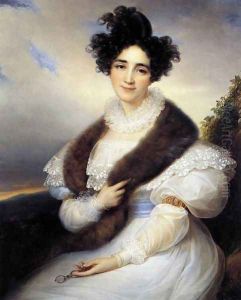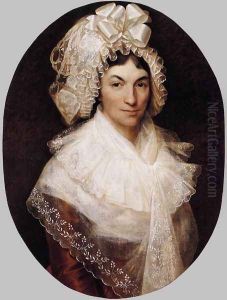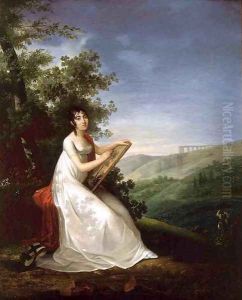Francois-Joseph Kinsoen Paintings
François-Joseph Kinsoen was a neoclassical portrait painter born in Bruges, Belgium, on February 4, 1771. His artistic talents emerged at an early age, and he was initially taught by his father, who was a decorative painter. He later studied under the prominent Flemish artist Joseph-Benoît Suvée. In 1781, Kinsoen moved to Paris to continue his education and career, where he became a pupil of Jacques-Louis David, the leading French painter of the neoclassical era. Under David’s mentorship, Kinsoen honed his skills and was greatly influenced by his teacher's style and the neoclassical movement, which emphasized simplicity, clarity, and classical beauty.
Kinsoen established himself as a portrait artist and gained recognition for his finely detailed and elegantly posed works. He produced portraits of many notable figures of his time, including the Bonaparte family. His ability to capture the likeness and character of his sitters made him popular among the elite and the middle class, who desired to have their portraits painted by him.
In addition to his work in France, Kinsoen also spent some time in Italy, where he was further inspired by the Italian masters. The cultural environment and the rich artistic heritage of Italy informed his work, leading to the incorporation of Italianate elements in his portraiture.
Despite his success, Kinsoen did not achieve the same level of fame as some of his contemporaries. However, he left behind a substantial body of work that contributes to our understanding of neoclassical portraiture and the aesthetic preferences of the era.
François-Joseph Kinsoen continued to paint until his death on May 3, 1839, in Paris. Today, his works can be found in various museum collections, and they serve as a testament to his skill and the artistic trends of the late 18th and early 19th centuries. Kinsoen’s legacy lives on through his portraits, which remain appreciated for their elegance and historical value.
